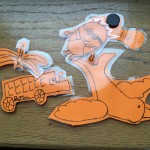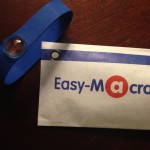Many years ago, a few friends and I had to call 9-1-1 for friend who was unresponsive. When the first responders came and started asking us questions, we couldn’t answer things like medical history, insurance information or emergency contact, until we discovered that our friend had filled out one of the information cards that comes in new wallets. All of the important information was right there. The process went from frustrating to all set. It saved everyone a lot of time and work.
I have been thinking about that card recently. I’d like to think that people who have conditions that may make them susceptible to medical emergencies are educated on having important information accessible if they can’t speak for themselves; we’ve probably all seen MedicAlert commercials. But even without health concerns, the most basic information can make the process a lot easier on everyone. I would guess that most people have already heard of programming ICE numbers into their cell phones and/or have seen ICE apps. If not, ICE stands for In Case Of Emergency. You add this title to specific contacts giving first responders or hospital staff some leads on important contacts. This is a great and simple idea, however, you may not have your phone on you, your phone may be damaged if you were in an accident, or there may not be time to look through your phone before needing treatment.
A physical card works great. It is really all you need if it is stored in a logical location. You can easily make your own. You want your most important information at the top: your name, emergency contacts, medical conditions and allergies. Other information, like your doctor, insurance, health history, organ donor status, DNR request are optional. You want to put a copy of the card in your wallet behind your drivers license, and perhaps in your car glovebox, under your bike seat if you are a biker, taped to your ipod if you are a runner, attached to a car seat, or other places where it might be close. Identification bracelets or shoe tags are a great idea for runners and cyclists. [I have a RoadID bracelet. You get a $1 off coupon to share with friends after ordering, and RoadID agreed to give me a new coupon to share. It is good until 4/23/2013, if anyone would like to use it. Simply us coupon number: ThanksJennifer24533891 at checkout. I receive no proceeds/benefit from this.]
You can also make cards for your children. Depending on where you put the cards, you may not want to get too forthcoming with the information. Pinned to a backpack, you may only want to put the child’s first initial and last name, emergency number and medical conditions and allergies. However, if your child does have allergies or other serious concerns, you may want to make a more informative card and leave copies when dropping them off for play dates, with babysitters, or birthday parties where the grown-ups around may not have your cell number or experience dealing with their conditions.
There are free templates and ideas all over the internet (here are a few: this, this, this, or this) but your card doesn’t have to be pretty or fancy.








Pingback: Simple Solution #2… | Two Clever Moms